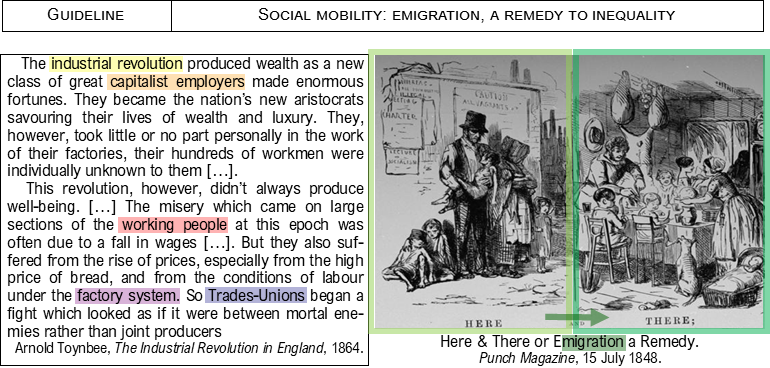![]() The Industrial Age 1815-1914 • • METHOD 1
The Industrial Age 1815-1914 • • METHOD 1

Stage 1 - Introduction: presenting the documents
Similarities: Both documents deal with the impact of the Industrial Revolution (I.R.) in the UK, in the Industrial Age 1815-1914, at the time of the 1st I.R. starting end of the 18th century.
Differences: The 1st document is an extract from a book on The Industrial Revolution in England by Arnold Toynbee published in 1864. The 2nd document is a cartoon, an engraving, about emigration published in Punch Magazine on 15 July 1848.
Give structure: In a 1st part I’ll analyse the inequality caused by the I.R. with the book & in a 2nd part I’ll emigration as a solution.
Stage 2 - Analysing the documents
| DESCRIBING - What you see (docs) |
EXPLAINING - What you know (notions) |
| 1. Social inequalities with book |
|
|
P1: the I.R. produced wealth. New affluent capitalists led the good life but didn’t care about their many workers. |
- |
| 2. Emigration, a remedy with cartoon |
|
On the right : here (UK). Poorly dressed, thin, downtrodden family standing in street maybe homeless and begging. |
|
Stage 3 - Concluding
Assess docs: To conclude, these documents are reliable as we have their full references ; both are biased: Arnold Toynbee denounces social inequalities & John Leech seems to promote emigration.
Sum-up ideas: These docs show that the IR had a negative social impact, increasing inequalities which caused British emigration to the USA.
Open: We may wonder if the 2nd I.R. in the USA also produced such inequalities.